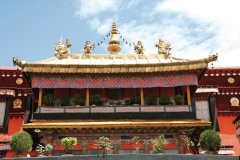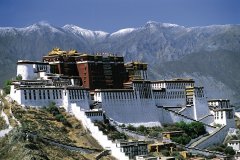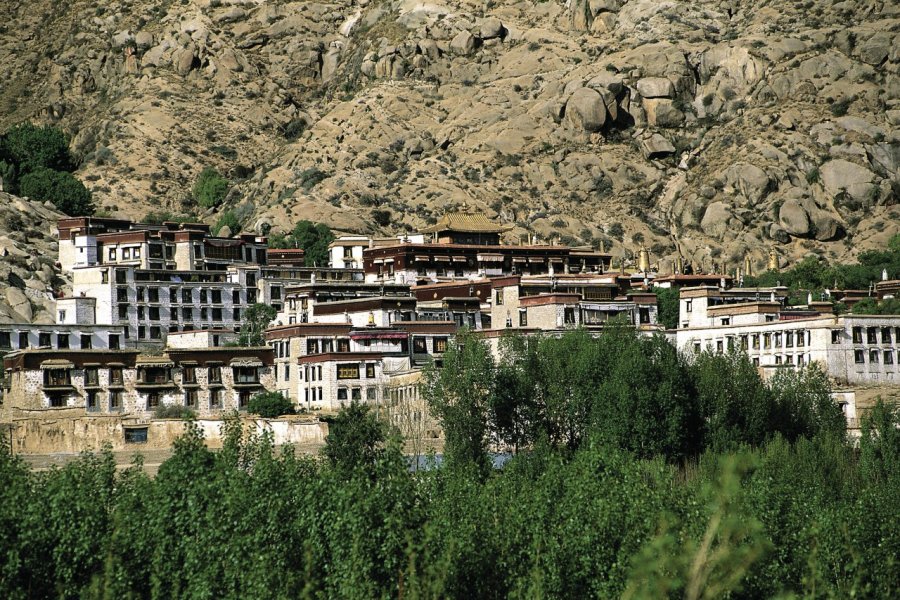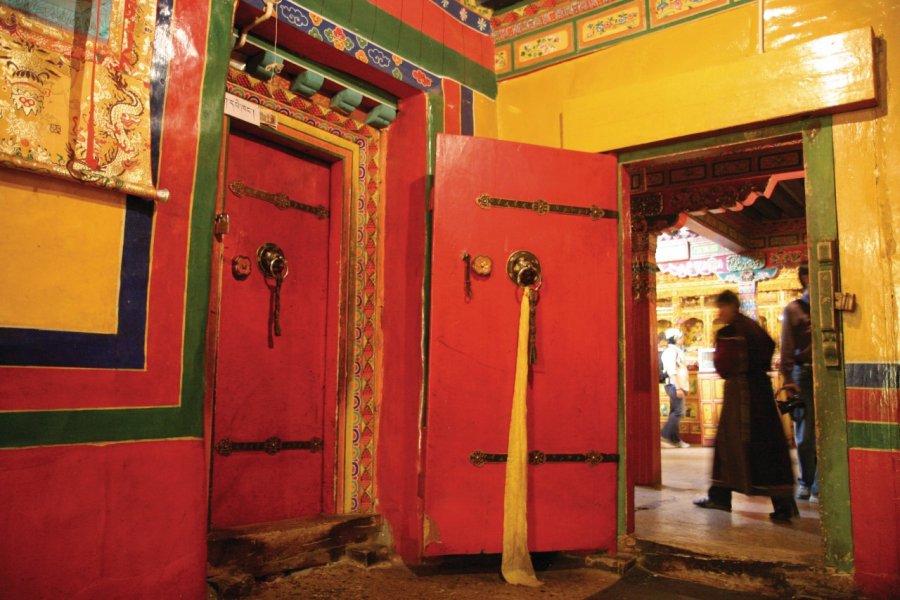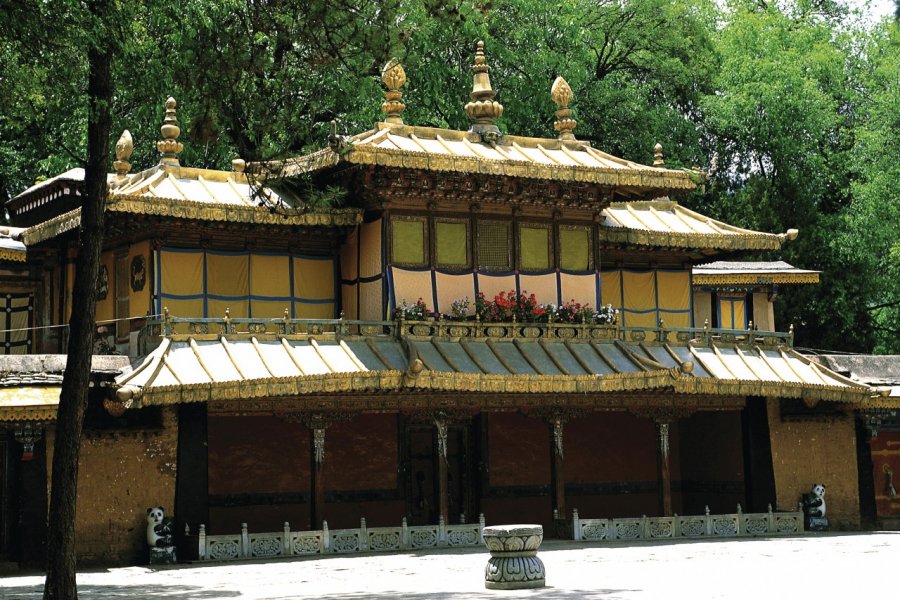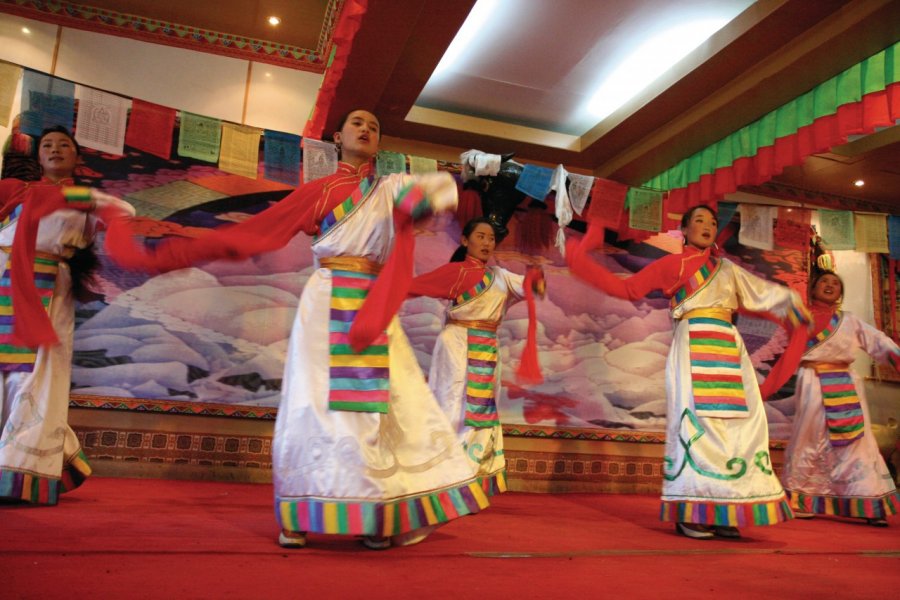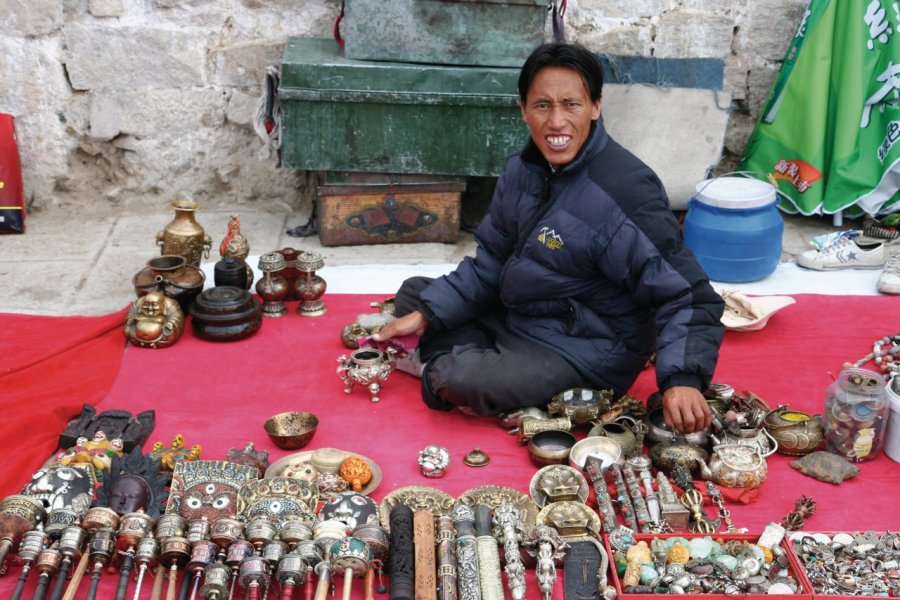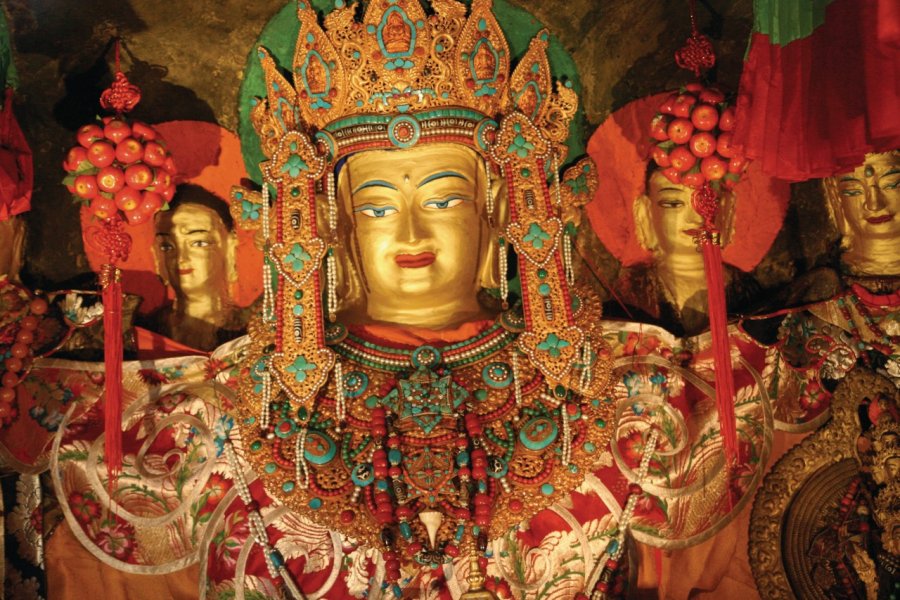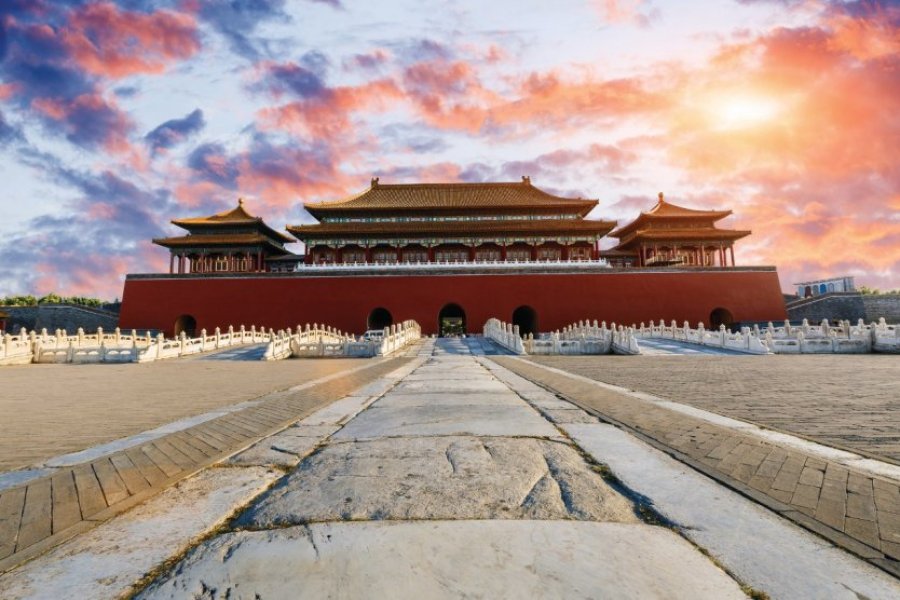Travel Guide Lhasa 拉萨
Find an accommodation
Advertising
In the th century, carrying his capital of the Yarlung Valley, on the edge of the Kyichu (river of happiness), Songtsen Gampo built his palace on the Red Hill, the site of the current Palace. Sacred by the presence of the Jowo, brought in dowry by the Chinese princess, the site takes the name of Lhasa, meaning «land of the gods».In the th century, with the disappearance of Buddhism, Lhasa was sidelined. We will have to wait for the 5 th Dalai Lama in 1642 to regain her glory with the Construction construction.Today, all trips to Tibet go through Lhasa. A capital forbidden to foreigners for centuries, this city remains the archetype of the sacred city where pilgrims converge, despite the great transformations undertaken in recent years in order to make it a large, more Chinese than Tibetan city.The city of Lhasa has approximately 150 000 inhabitants, 70% of whom are Chinese (in opposition to Lhasa Prefecture, which now counts in the 400 000 inhabitants, mostly Tibetan).Through the faubourgs suburbs of barracks, you will find a beautiful perspective on the Tibetan houses that survived the development of the old town. The Palace, which you will find from afar, is perched majestically on the Red Hill (Marpori). In approaching you, ignore the great esplanade of the kitsch-lamp, made on the occasion of the 30 th anniversary of liberation in September 1995, and will search in the old town for the streets where still - and we hope for a long time - the Tibetan spirit.
What to visit Lhasa 拉萨?
Advertising
Weather at the moment
Advertising
Organize your trip with our partners Lhasa 拉萨
Transportation
Book your plane tickets
Car Rental
Boat rental
Accommodation & stays
Find a hotel
Holiday rental
Find your campsite
Tailor-made trip
Immersion travel
Services / On site
Activities & visits
Find a doctor
Lhasa 拉萨 travel inspiration
Find unique Stay Offers with our Partners
Pictures and images Lhasa 拉萨
Featured articles Lhasa 拉萨
Other destinations nearby Lhasa 拉萨
100 km away
